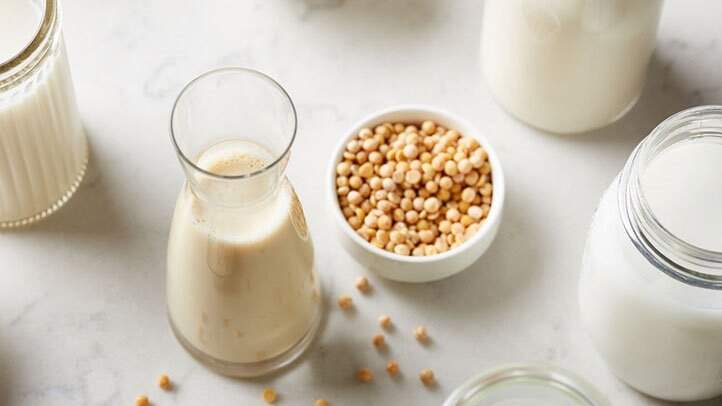Why is skim milk added to milk?
They have vitamins A and D, but these nutrients are added back into skim milk because they are lost when the milk fat is removed. Whole milk is often fortified with extra vitamin D. Both kinds are good sources of calcium, an essential mineral for the health of your bones and teeth.
Many thought that the more fat you ate, the more fat your body would store, making you gain weight. Nonfat milk has become a popular choice because it is lower in fat and calories than whole milk.
Babies and toddlers are thought to benefit from the fat and protein in whole milk more than adults. Because they grow and develop so quickly, their bodies need the saturated fats found in whole milk.
You’re probably familiar with the basic types: Whole milk, also labeled as full-fat milk or vitamin D milk. This has a fat content of at least 3.25%. No fat is removed from the milk during processing. Reduced-fat milk, also labeled as 2% milk. This has about 2% fat.
When you drink whole milk, your LDL goes up more than if you drank skim milk. But the saturated fats in whole milk and dairy products also raise your levels of HDL.
Skim milk is not creamy. Experts have long debated whether the fat in milk is healthy. In the past, it was thought that foods that are higher in fat were bad. But newer research shows that it’s the kind of fat that matters, more than the amount. In fact, recent studies show that higher fat intake from dairy and other sources is linked …
Skim milk and whole milk are also good sources of potassium, which can lower your blood pressure. Milk is a good source of protein, too. One of the benefits of skim milk is that you can get a good amount of protein from just one glass with no added fat. There are several things to consider when drinking skim milk.
How many grams of protein is in skim milk?
Protein. 3.4 g. 8.3 g. Skim milk contains around 5 gram s of carbohydrate per 100 ml, and this comes in the form of the milk sugar lactose. Similar to all dairy foods, skim milk contains every essential amino acid in sufficient amounts to be considered a complete protein.
Skim milk is simply milk that has had most of the butterfat removed and some vitamins added by fortification. We will examine the full nutritional content a little later on, but skim milk usually has between 0% and 0.1% fat content. Depending on where you live, you may know this type of milk by different names:
For instance, 100 grams of skim milk contains 34 calories and 3.4 grams of protein. One gram of protein is equal to 4 calories, so there is a total of 13.6 calories from protein per 100 grams. These ratios give a protein density of 40%.
To make skim milk, producers use a centrifugal separator to remove the fat globules from the milk. Centrifugal separators operate by spinning the milk at extremely high forces. During this process, the milk and the fat separate and run off into two spouts leading to different containers within the centrifuge.
The main difference in the nutrition profile of whole and skim milk is the calories and fat content. As skim milk contains no fat, the total amount of calories (1 gram of fat = 9 calories) is much lower.
In this regard, skim milk also has a much higher milk sugar (lactose) density than whole milk does .
There is a popular belief that we may not be able to absorb (fat-soluble) vitamin A in fat-free skim milk. However, these claims do not appear to be well supported. For instance, one controlled study compared the bio-availability of vitamin A in whole milk and fortified skim milk ( 12 ).

